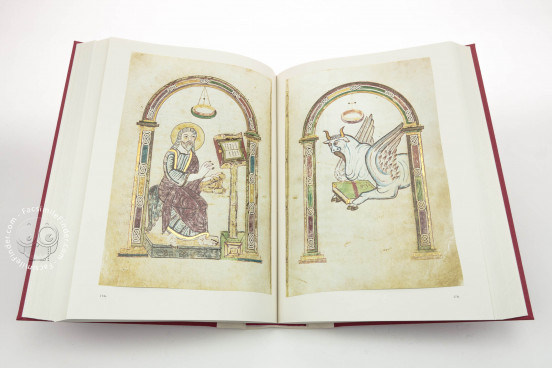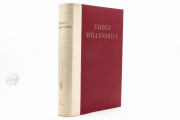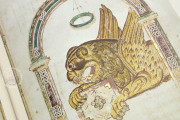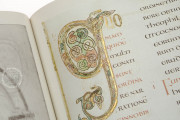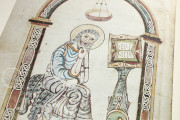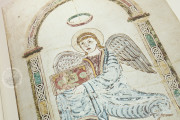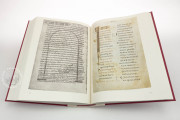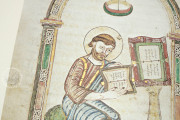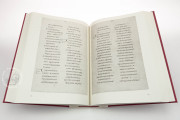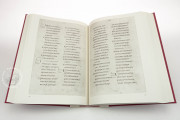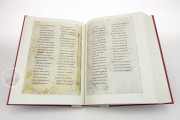A treasured possession of Kremsmünster Abbey, the Codex Millenarius is a collection of all four Gospels in Latin. Just like the famous Tassilo chalice and chandeliers, this manuscript is still used in liturgical rites nowadays. Its age, outstanding script, and superlative illustrations make it an invaluable item. Moreover, the text is the only surviving example of a now lost Bavarian-Austrian Vulgate.
The Codex Millenarius: a Carolingian Masterpiece
Copied around 800 AD, the Codex Millenarius is named after the millenium anniversary of the foundation of Kremsmünster Abbey celebrated in 1777. When former prefect of the Vatican Archives, Msgr. Garampi saw it, it is thought that he said: "Vere hicce millenarius codex est" ("This is truly a millenary book"). The manuscript was either crafted in the scriptorium at Mondsee, Kremsmünster's mother house, or possibly in Kremsmünster itself, where it was held ever since. Its illustration cycle is typically Carolingian: its eight full-page miniatures of the four Evangelists and four lavish initials at the beginning of each Gospel are coupled with decorated Canon Tables.
The Illuminations
Very few other books pair the portraits of the Evangelists with their respective symbols in large full-page illuminations. Their depictions stun the beholder due to their briskness and the details they display. Another peculiar feature of the Codex Millenarius is that all the characters are always enclosed in greatly decorated round arches. Framed in silver and gold, they also display an intricate interlaced pattern.
Calligraphy in Its Noblest Form
The Codex Millenarius is also priceless due to the beauty and harmony of its script. Though the open books in Evangelists's hands display an extremely fine minuscule script, the text of the manuscript is written in a beautiful uncial. Each single page is thus a downright masterpiece of graphic skill and know-how, which was possibly executed in full by one single artist.
A Unique Textual Composition
The Codex Millenarius is a plenarium or evangelistary, that is, it contains the complete text of all four Gospels. The version is that of the Vulgate, though some extracts are taken from the Vetus Latina, something that has made scholars believe the book's archetipe was a Vetus Latina that was subsequently modified into a Vulgate. There are only three manuscripts of this type to have reached the present day, and the Codex Millenarius is undoubtedly the best preserved and most exceptional of them.
We have 1 facsimile edition of the manuscript "Codex Millenarius": Codex Millenarius facsimile edition, published by Akademische Druck- u. Verlagsanstalt (ADEVA), 1974
Request Info / Price
